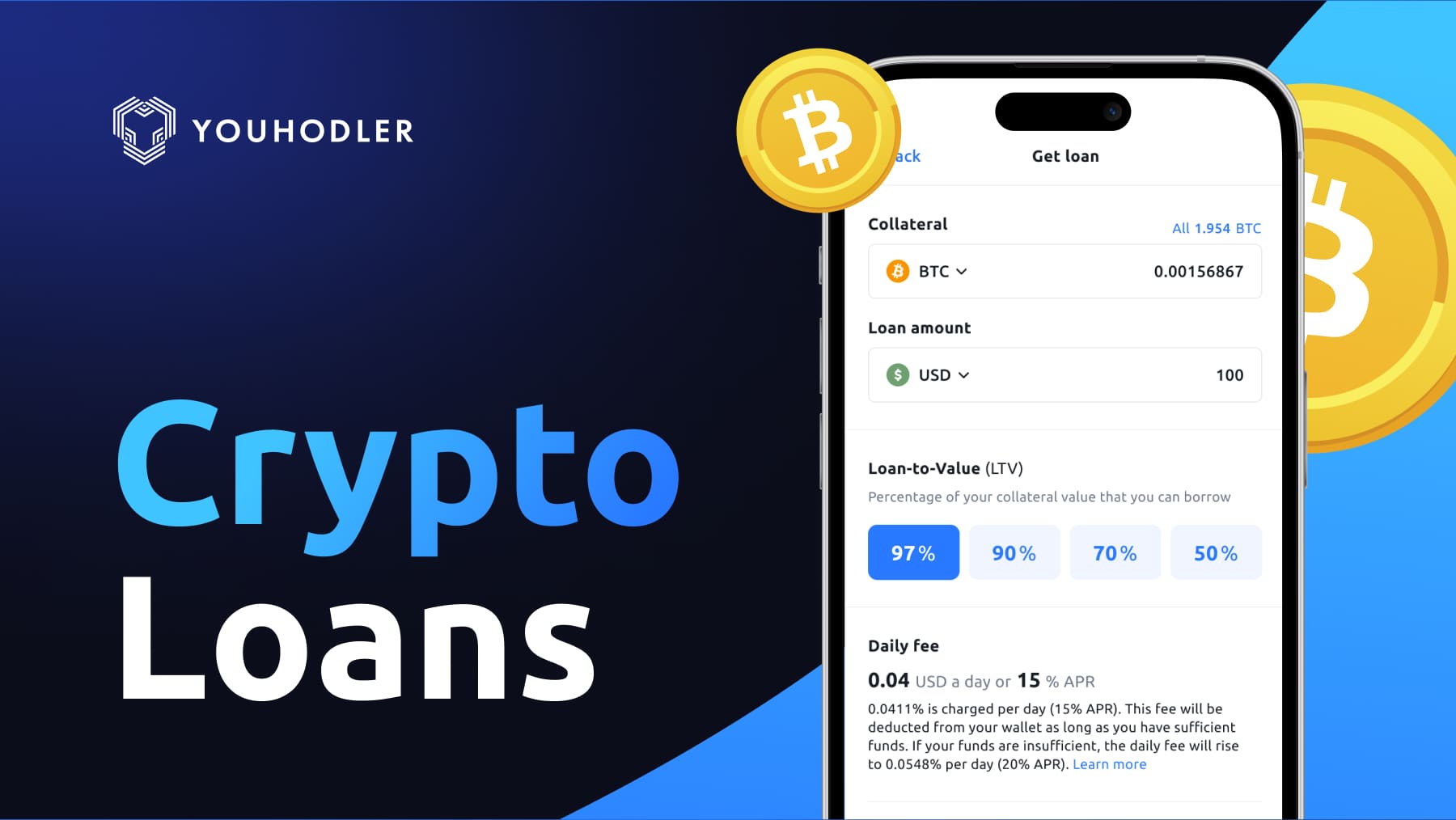Curious about cryptocurrency lending? Explore all the essential information you need, from grasping the concept to navigating the lending process, in our article.
Cryptocurrency loans, also referred to as crypto-backed loans, blend traditional lending practices with blockchain technology. These loans enable individuals to borrow funds by leveraging their crypto assets as collateral. Unlike conventional loans that hinge on credit checks and factors like credit history and income, crypto loans are secured by the value of the borrower’s crypto holdings.
The distinctive feature of crypto loans lies in their decentralized nature. Typically executed through smart contracts on blockchain platforms, these loans eliminate the need for intermediaries such as banks or financial institutions. This decentralization enhances transparency, simplifies processes, and reduces costs associated with traditional lending.
Understanding the Mechanics:
Collateralization:
Borrowers offer a specific amount of cryptocurrency as collateral to secure the loan. The collateral’s value usually exceeds the loan amount to accommodate potential price fluctuations in the crypto market. Commonly accepted cryptocurrencies as collateral include Bitcoin (BTC), Ethereum (ETH), and other major digital assets.
Loan-to-Value Ratio (LTV):
The LTV ratio signifies the ratio of the loan amount to the collateral’s value. For instance, if a borrower pledges \(10,000 worth of Bitcoin for a \)5,000 loan, the LTV ratio is 50%. This ratio plays a crucial role in determining the loan terms, with a lower LTV indicating lower risk for the lender.
Loan Terms and Interest Rates:
Borrowers and lenders agree on various terms such as the loan amount, interest rate, and repayment period. Interest rates for crypto loans fluctuate based on market conditions, the type of cryptocurrency used as collateral, and the loan duration.
Repayment Options:
Borrowers can select between regular interest payments with a full principal repayment at the loan term’s end or interest-only payments with a separate principal repayment. Some platforms even offer loan term extensions if necessary.
Margin Calls and Liquidation:
Lenders may issue margin calls if the collateral’s value dips below a specific threshold. In such instances, borrowers must either add more collateral to maintain the LTV ratio or repay a portion of the loan. Failure to meet margin calls or defaulting on the loan can lead to collateral liquidation by the lender.
Types of Crypto Loans:
- Centralized Crypto Loans: These are facilitated by centralized lending platforms acting as intermediaries between borrowers and lenders. While offering convenience, they often entail stricter requirements compared to decentralized finance (DeFi) alternatives.
- DeFi Crypto Loans: Offered through decentralized lending protocols on blockchain networks, DeFi loans leverage smart contracts for direct peer-to-peer lending, providing more flexibility.
- Collateralized Loans: Borrowers pledge their crypto holdings as collateral, a prevalent type in the crypto lending market.
- Non-Collateralized Loans: Also known as unsecured loans, these don’t require collateral but rely on the borrower’s creditworthiness.
- Flash Loans: A unique type of non-collateralized lending in DeFi protocols on the Ethereum network, allowing borrowing without collateral within the same transaction.
Advantages and Risks:
Advantages:
- Access to Liquidity: Borrow without selling crypto assets.
- No Credit Checks: Approval not based on credit history.
- Flexibility: Varied loan terms and repayment options.
- Lower Interest Rates: Often competitive compared to traditional loans.
- Privacy and Security: Enhanced compared to traditional banking.
- Fast Approval Process: Approval within minutes or even seconds.
Risks:
- Volatility Risk: Exposure to price fluctuations in the crypto market.
- Smart Contract Risk: Vulnerabilities in smart contracts could be exploited.
- Regulatory Risk: Evolving regulatory landscape poses uncertainties.
- Security and Custody Risk: Risk of breaches or mismanagement by custodians.
Choosing a Crypto Lending Platform:
Consider the following factors when selecting a platform:
- Reputation and Reliability
- Security Measures
- Supported Cryptocurrencies
- Loan Terms and Interest Rates
- Customer Support
Getting a Cryptocurrency Loan:
Follow these steps:
- Research and select a reputable crypto lending platform.
- Create an account and complete necessary verifications.
- Deposit your crypto collateral.
- Choose loan terms.
- Await approval.
- Receive funds.
- Monitor loan status to avoid liquidation.
- Make timely payments.
YouHodler Crypto Loan Platform:
Considering a crypto loan? YouHodler offers loan-to-value ratios up to 97%, instant approval, and accepts 50+ top cryptocurrencies as collateral. With transparent fees and multiple repayment options, YouHodler provides the flexibility and convenience you seek.

